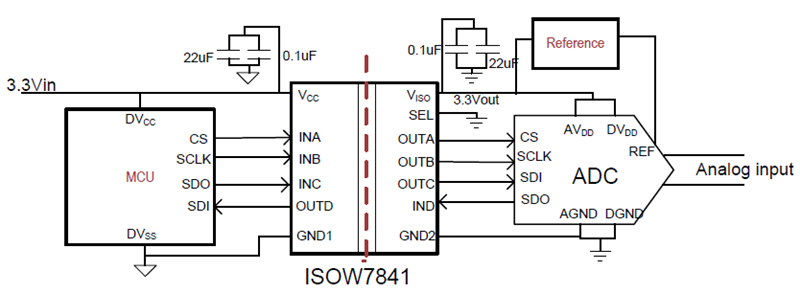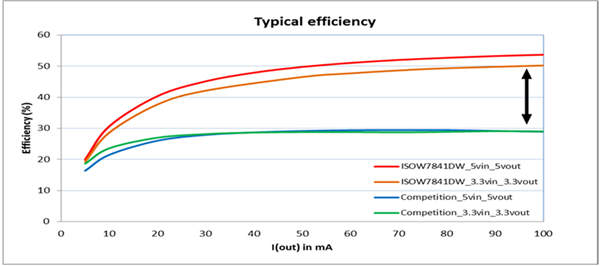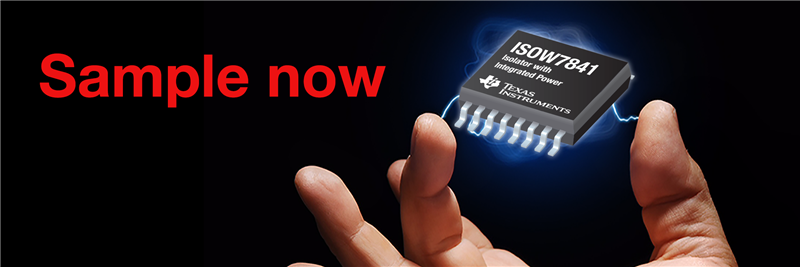SSZTAB6 March 2017 ISOW7841
Winters are getting shorter and temperatures are on the rise, and I think you’ll agree with me that overheating is never a good thing. Whether it’s human beings, equipment or pizza, you never want anything to be too hot.
As the demands on industrial applications – such as factory automation and grid infrastructure equipment – increase, the need to add more features to the system increases as well. This puts more pressure on the power-management system to power the various circuits for optimum performance without raising equipment temperatures.
In one of my previous blog posts, I discussed the use of isolators for protecting the low-voltage side from the high-voltage side of a system. The data isolators can easily achieve signal isolation. But isolating just the data is not enough; the power supply also needs isolation. In some cases, there are two isolated power supplies available to directly power up the primary and secondary sides of the isolator. But in others, the application may not have a secondary power supply. In those cases, you’ll need to generate the isolated secondary power from the primary power supply.
Figure 1 shows a solution using discrete components to build an isolated power supply. The transformer driver operating from the primary power supply generates a push-pull signal to drive the primary windings of the isolation transformer. Depending on the turns ratio, the transformer provides the desired secondary voltage. The rectifier diodes following the transformer help with rectification, and the regulator that follows helps smooth out the ripple. It might even be possible to eliminate the regulator if the output of the rectifier is good enough for the system performance.
 Figure 1 Isolated Power Supply Using
Discrete Components
Figure 1 Isolated Power Supply Using
Discrete ComponentsThis solution offers very good power-transfer efficiency due to the external transformer, but using multiple components adds to system cost and board space. And in case the system uses multiple isolators, the discrete circuit needs to be replicated to match the number of isolators and – you guessed it – this adds to system cost and board space.
A single-chip solution that provides isolated signal and power would solve these issues. Figure 2 shows TI’s ISOW7841, which provides isolated data and power. This device does not need external components to build the isolated power supply. The integrated DC/DC converter provides up to 650mW of isolated output power, and because it’s integrated, board space and solution cost are reduced.
 Figure 2 Isolated Power and Serial
Peripheral Interface for an Analog-to-digital Converter Sensing Application with
the ISOW7841
Figure 2 Isolated Power and Serial
Peripheral Interface for an Analog-to-digital Converter Sensing Application with
the ISOW7841One possible concern that might cross your mind is whether this integration could possibly lead to an increase in device and system temperatures, thereby causing system failures. Compared to other integrated solutions available, the ISOW7841 reinforced isolator with integrated power has an 80 percent higher efficiency, as shown in Figure 3. High-efficiency power transfer helps drive more power to the output while staying cool, providing additional power to drive other devices. Higher efficiency also helps facilitate multiple channels to be closer together without overheating.
 Figure 3 Efficiency Comparison between
the ISOW7841 and a Competing Solution
Figure 3 Efficiency Comparison between
the ISOW7841 and a Competing SolutionStill finding it hard to believe? Check out our demo at the Applied Power Electronics Conference (APEC) in Tampa, Florida, March 27-29, 2017. Our booth will showcase the ISOW7841’s high efficiency, and isolated data and power transfer. Hope to see you at the show.
Additional Resources
- Check out the ISOW7841 data sheet.
- Download the white paper, “Fully integrated signal and power isolation – applications and benefits.”
- Watch the video, “Reinforced isolation and power: an integration story.”
- See TI’s entire isolation portfolio.
- Search for solutions and engage with fellow engineers and TI experts in the TI E2E™ Community Isolation forum.
- Start designing your industrial systems with the optimized binary module using digital isolator with integrated power converter and 8-channel isolated high-voltage analog input module reference designs.
- Read this article and learn how to achieve low radiated emissions with fully integrated data and power isolation.
